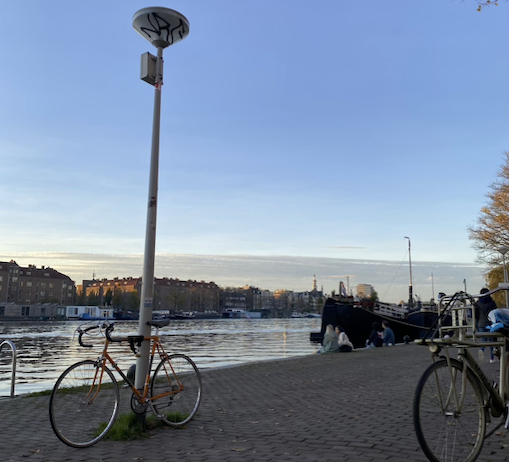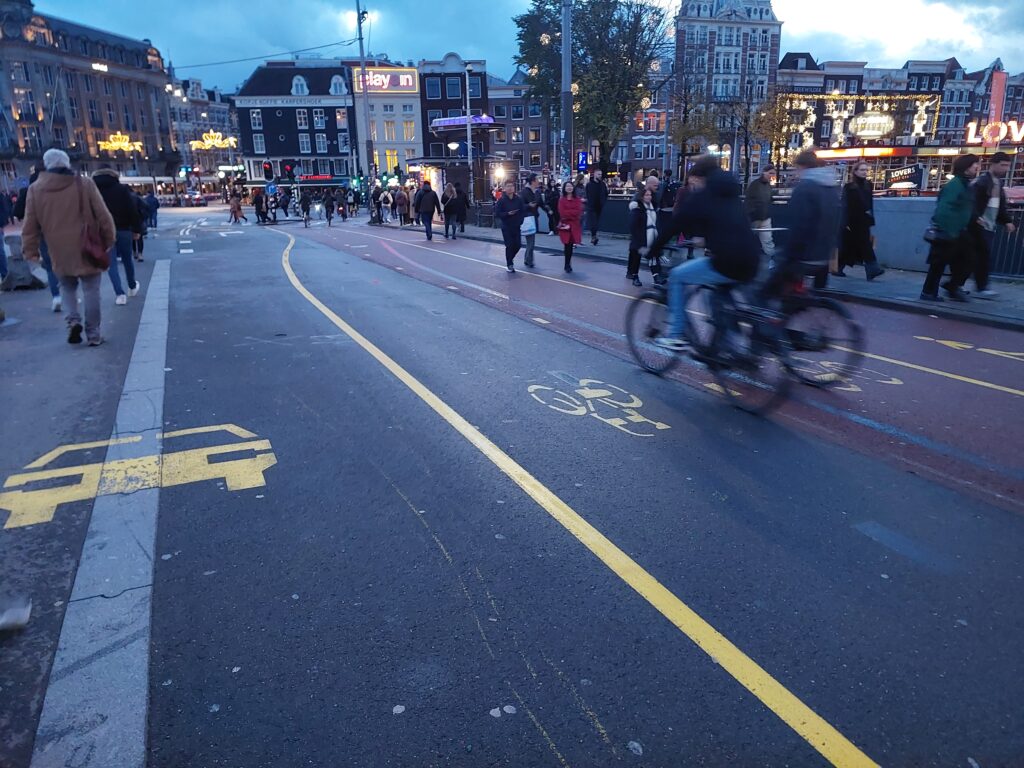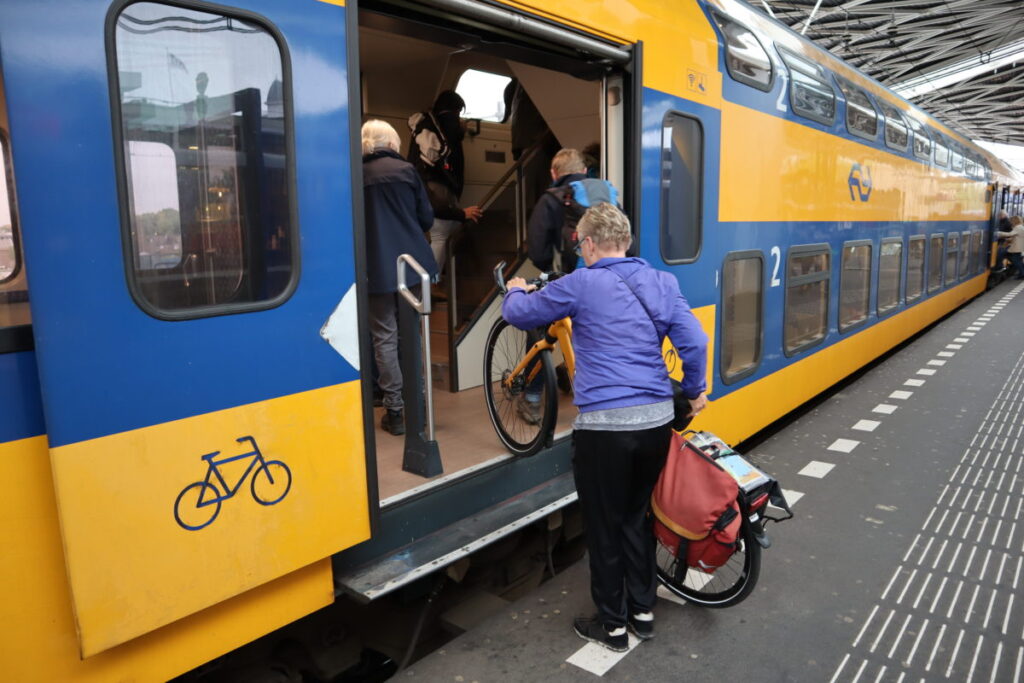Alistair McCay | LinkedIn | Twitter
Most Inspiring Essay Finalist, February 2020
Civil Engineering Lecturer at University of Glasgow
Unraveling the Cycling City MOOC on Coursera
Infrastructure exists within a complex societal discourse involving aspects of land use, societal values, multi-cultural influences, and perceptions of futures. In this course I was introduced to research and views of those from Urban Planning, Sociology, History as well as other subjects. The reading enabled me to consider the Dutch cycling infrastructure from perspectives outwith my engineering background. Although Prof. te Brömmelstroet called these rabbit holes, it made me realise that I hadn’t considered that I’d been stuck down my own civil engineering rabbit hole of thinking that if we could only sort out the infrastructure then the rest of the puzzle would fix itself.
Which left me with the question as a civil engineer how do I better engage with these discourses to inform my engineering and my teaching of engineering? Of course I don’t have the answer to that, but to show how the course has challenged my thinking, I will focus on two key learnings in this essay.
KEY LEARNING 1: Embodied Making, incorporating people’s lived experiences to better inform data and further consequences of design resolutions
The paper about Embodied Making by Prof te Brömmelstroet and others highlighted an issue for me as an engineer; that data alone is not enough to explain the complexity of human interactions. Although, I’ve known that including people’s lived experiences is vital for appraising design resolutions and improving practice, I have struggled with the “how”. Embodied Making could provide the required framework, especially considering the learning from each design iteration as the paper says
knowing that no solution ever resolves all forces and in turn creates complexity of its own
te Brömmelstroet, M., Nello-Deakin, S., Quillien, J., & Bhattacharya, I. (2018). Towards a pattern language for cycling environments: merging variables and narratives. Applied Mobilities, 00(00), 1–19.
As a practitioner, people are often asking why we can’t just figure out a solution that benefits everyone. The Embodied Making philosophy succinctly tackles this issue that sometimes forces are conflicting and our resolutions favour resolving one force over another. When we try new things in different urban contexts then the complexity can lead to different outcomes; some of which are unexpected.

However, the way that Shared Space was introduced in the UK was fundamentally flawed as it did not require significant curbs to traffic volumes. As such, there were many complaints that it made experience for people walking far worse and that those with sensory impairments were excluded from these urban environments. Department for Transport followed up these complaints with studies which found that indeed, Shared Space led to minimal change in driver behaviour, but detrimental changes to the perceptions of those walking in the area. As such the guidance was withdrawn.
Would Embodied Making allow for those personal experiences to be more quickly and better incorporated into the design guidance leading to better outcomes or swifter withdrawal of flawed guidance?
The paper also gives me a framework through which to support students in the learning of urban infrastructure design as…
Learning to live with incompleteness and growing understanding of experiences, complexity, and resolutions as nested threefold knowing that the recursions will never result in a perfect or stable understanding is the essence of Embodied Making
te Brömmelstroet, M., Nello-Deakin, S., Quillien, J., & Bhattacharya, I. (2018). Towards a pattern language for cycling environments: merging variables and narratives. Applied Mobilities, 00(00), 1–19
Which provides the context that this subject is not about grasping for perfection, but to support people’s mobility in urban areas while minimising disbenefits to themselves and others.
KEY LEARNING 2: Design principles of motor traffic engineering do not work for cycle infrastructure
The simplest example showing this learning was “The Cone” introduced in the Plan Magazine article discussing various aspects of how new thinking improves flow and comfort at busy junctions. To have a crossing change width across it would be impossible for car design. The success of “The Cone” shows how if we allow that natural chaos of cycling masses to thrive, experiences and function both can increase.

Similarly, the quote from Bertolini, L. & le Clercq, F. (2003) shows how car-centric thinking in the planning system can also lead to poor resolutions for walking and cycling…
… accessibility should be defined as the amount and the diversity of ‘spatial opportunities’ that can be reached within a certain amount of time
Bertolini, L. & le Clercq, F. (2003)
In Transport Engineering, we discuss trip generations and mode choice. The concept of ‘spatial opportunities’ approaches the issue from a different side. How do we, as a city, ensure that sufficient ‘spatial opportunities’ are offered to people at travel times achieved through walking and cycling?
Remaining Question:
My remaining questions are based around this quote in particular from Prof. de Brömmelstroet’s excerpt in PLAN Magazine:
[Pedestrians and cyclists] can communicate with other road users through eye contact or body language by a hand wave or little nod of the head
If eye contact is so important, how do we expect people with visual impairments to navigate our cycling city? How do we ensure that the cycling city is inclusive?
Conventional wisdom from traffic engineering dictates that we should put in lights to allow people to cross a road. However, too many or improperly timed traffic lights could encourage “scofflaw” rule-breaking behaviour by cyclists and pedestrians. I have learned that resolutions for cycling infrastructure need to be specifically thought out for needs and behaviours of those cycling. So perhaps solutions other than lights, or lights applied differently, need to be thought out to support people with visual impairments to confidently navigate the cycling city.
About Alistair McCay: I am a Civil Engineering Lecturer at University of Glasgow and recently resumed responsibility for teaching of our Transport Engineering stream. Currently, I am revamping the modules to focus on inclusive active travel in urban areas; away from previous car-centric design thinking.



